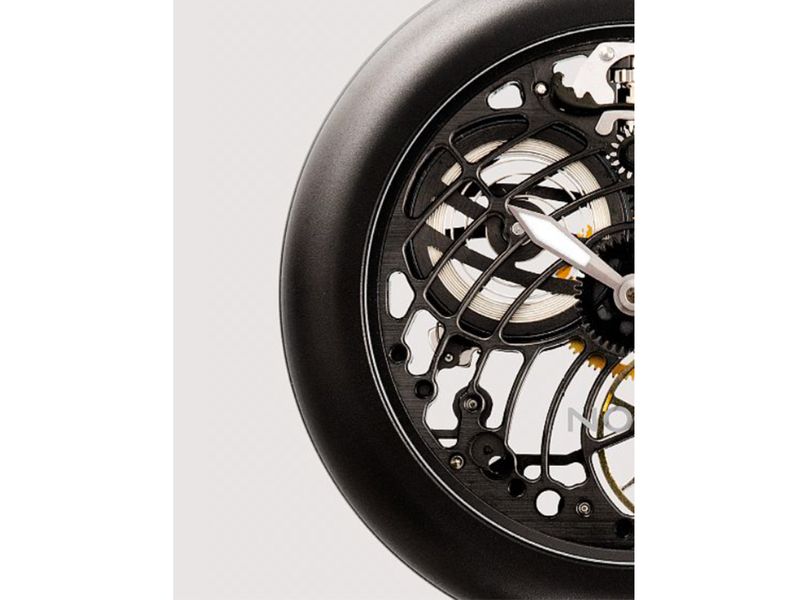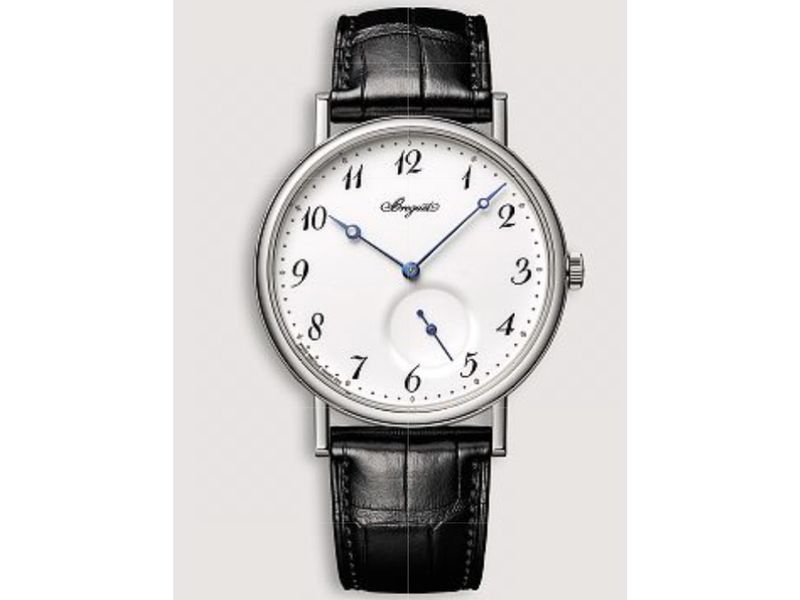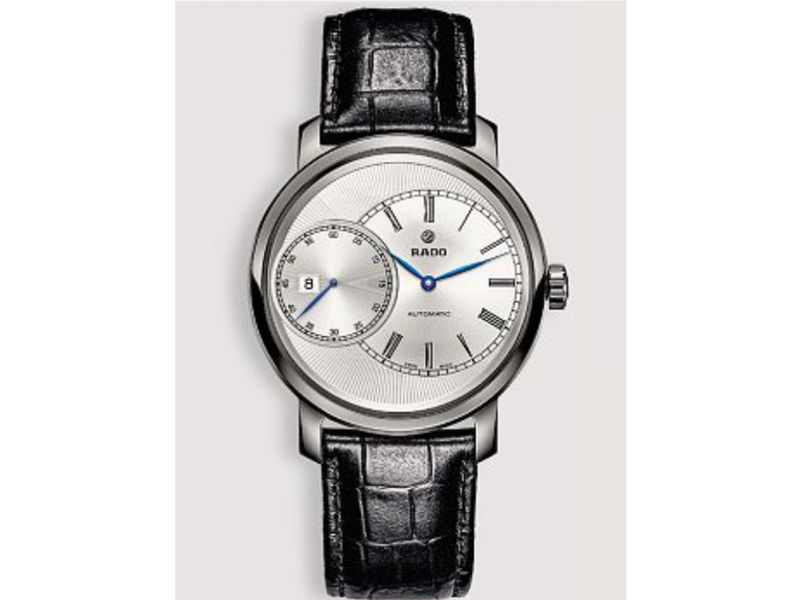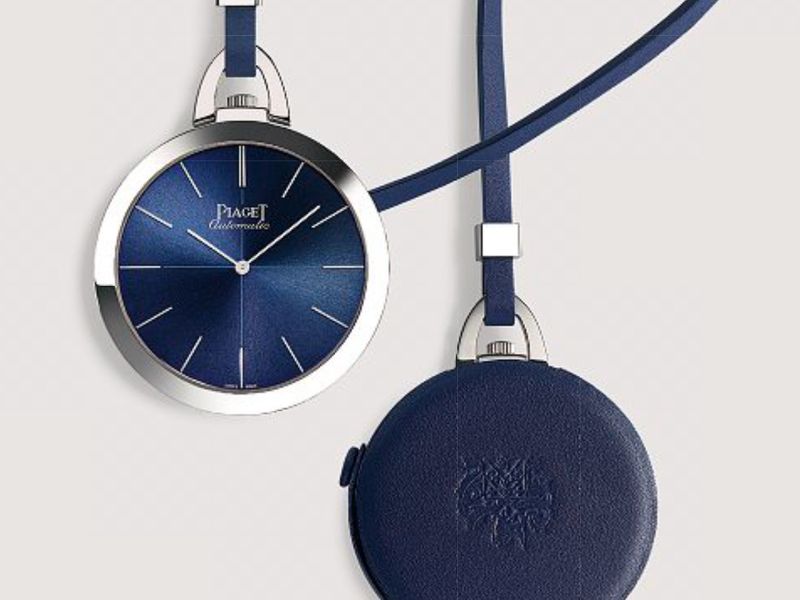Highlights
The principle of making something new out of something old, not an unusual approach in the fashion or car industries, can also be seen in the world of watchmaking. The trend, known as ‘neo-vintage’ or ‘retro-futurism’ allows the hands of time to turn in both directions, bringing us watches that are as amazing as they are attractive.


If you are one of those people that compares time to a river, its rushing torrents, like seconds, minutes and hours, flowing endlessly on, then you should know that watchmakers offer an alternative. Like a metronome tapping out the tempo in a back-and-forth movement, watchmaking never stops toing-and-froing between the past and the future. This is evident in the vogue of vintage, which leads many labels to offer their clientèle reissues of models that were first released several decades ago. But beyond these collections, also referred to as heritage, designers and inventors are not satisfied with simply moving ahead by looking back. Hence we see both kinds of watches marketed - models with a retro appearance that also utilise the best technology and, conversely, innovative models that pay tribute to the good old days. Among the illustrious and venerable manufacturers, with some recent creations that make use of components created from futuristic materials, is Breguet, founded in 1775. Concealed behind a superb enamel dial with a traditional face, at the heart of the mechanical movement in the 7147 model from the prestigious Classic collection, lies a silicon balance spring. A wear-resistant, amagnetic and self-lubricating material that represents cutting-edge technology.
In the same vein, how about the classical style of the new Rado DiaMaster Grande Seconde, with a double dial that looks a lot like traditional watchmaking? You will be surprised to learn that its case, which looks metallic, owes nothing to steel and is in fact ceramic! Smelted in a plasma furnace, a gas that reaches 20,000 degrees Celsius gives the case its truly unique appearance.
Elsewhere, the young and promising French brand Sartory Billard has just unveiled its SB02 watch, which has a cellulose acetate bezel. Yes, the same “tortoiseshell” material that our grandmothers' glasses were made of. In this particular case, however, the brown monochrome has given way to a very stylish blue.
This choice of an old-fashioned material to make a modern watch is a concept shared by brands like Oris, Tudor and Bell & Ross, who decided to go back to the Bronze Age, or 3,000 B.C.E. Hence the BR01 Instrument de Marine has a bronze case surrounded by precious wood. Its sole concession to modern technology is the case back, made of titanium, prized for its hypo-allergenic properties and light weight.
During the 19th century and until the start of the 20th century, men would carry their watches around on a chain, hidden deep in a waist-coat pocket. Elegance guaranteed, but of questionable practicality. The quest for efficiency led to the use of a strap, allowing a watch to be worn on the wrist. Nowadays, most surviving ‘antiques’ are stashed away at the back of the drawer of family memories. Piaget decided to celebrate the 60th anniversary of its ultra-thin Altiplano model with a pocket watch version. But this particular watch strikes a truly contemporary pose with its pure design, finesse, blue dial and matching blue calfskin leather loop and pouch. Tissot, with its Pocket Touch, and Panerai, have also added this genre of timepieces to their range, just like another young French brand, Novy, which has created a spectacular watch, the Lepine Allblack, all in black, simultaneously retro and futuristic.
To give their watches that irrefutable classic touch, some brands have decided to include a ‘real’ piece of the past in the casing. Bremont has used a fragment of canvas taken from the wings of the Wright Brothers' plane that made what is deemed to be the very first ever motorised flight in 1903. Romain Jerome has released a watch made from old metal parts of the Titanic brought back to the surface, and Saint Honoré has made the case of its Eiffel Tower model out of an iron beam from the famous Parisian monument.
The inner workings of the vast majority of mechanical watches are based on technical solutions that were in fact discovered between the 17th and 19th centuries and have remained practically unchanged since that time. The positioning of the hour and minute hands on a single axis in the centre of the dial? 1686. The automatic movement? 1770. The tourbillon, queen of the current complexities? 1801. Nevertheless, one manufacturer has just parted with the past. Zenith has announced the development of a technical component that will revolutionise mechanical watchmaking: The Defy Lab concept watch features an oscillator formed from a single part, replacing the usual component that controls the inner workings of the watch - the balance spring assembly invented by Huygens in… 1675 ! And until now, no-one had ever questioned it. Now it's a fait accompli, delivering a level of precision which is ten times better than before. As there is nothing to prevent this innovative mechanism being placed inside a vintage-looking case, we can expect a rosy future for retro-futurism…






